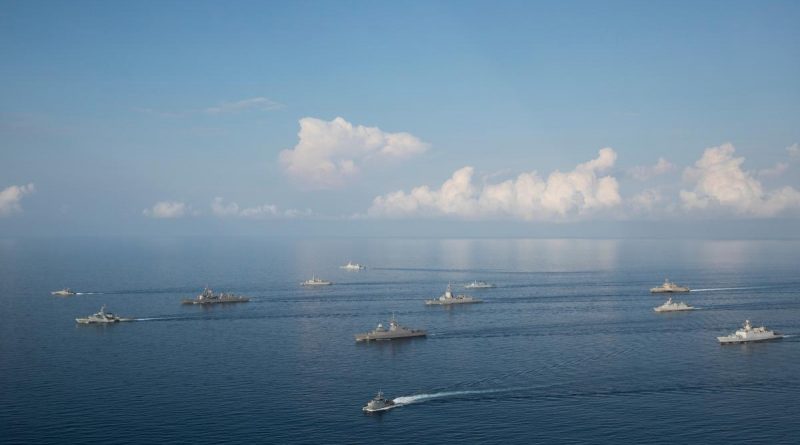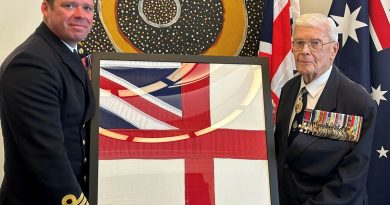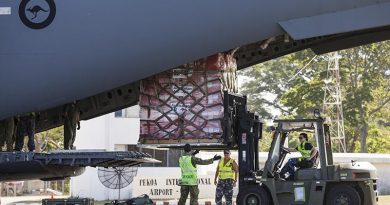Navy’s largest exercise comes to a close

Exercise Kakadu 2022 has come to a close, with the theme of ‘partnership, leadership and friendship’ woven through a full program of activities in the seas and skies off Northern Australia and in Darwin from September 12-24.
CAPTION: Ships participating in Exercise Kakadu 2022 sail in formation during a photo exercise off the coast of Darwin. Story by Commander Emily Curtis and Lieutenant Commander Andrew Herring. Photo by Leading Seaman Tara Morrison.
Kakadu 2022 was one of the biggest iterations yet, having grown in scale and complexity over the past 30 years.
This year’s exercise involved 15 warships – including a submarine – and 34 aircraft from 22 different nations, along with more than 3000 sailors and officers.
Speaking at the official closing reception hosted by Administrator of the Northern Territory Vicki O’Halloran, Commander of the Australian Fleet Rear Admiral Jonathan Earley said the contribution of Australia’s regional friends and partners to Exercise Kakadu was a true reflection of longstanding friendships and cooperation.
“Exercise Kakadu is the Royal Australian Navy’s most significant international engagement activity and is vital for building relationships between participating countries,” Rear Admiral Earley said.
“I thank our international partners for their contribution to this maritime activity, which helps to reinforce the importance of peace, stability and rules-based order in the Indo-Pacific.”

CAPTION: HMAS Hobart crew members participate in a sunset memorial service to honour the Queen. Photo by Leading Seaman Tara Morrison.
This year, participating forces steamed more than 24500 nautical miles, conducted 13 anti-submarine warfare exercises, 15 air warfare serials and 17 gun-firing exercises, and expended more than 13000 rounds of ammunition in high-end training scenarios.
The air component flew 163 fixed-wing aircraft sorties, providing the Kakadu fleet and aviation task force with some of the best maritime air warfare training opportunities experienced in recent years.
The capabilities exercised ranged from humanitarian and disaster relief, seamanship and maritime law enforcement operations to high-end maritime warfighting, including anti-air and anti-submarine warfare in a combined environment.
Ashore in the Exercise Control organisation, for the first time in the exercise’s history, representatives from international partners filled almost all key positions, supported and mentored by their Australian counterparts.
“The post-COVID environment allowed us once again to build relationships through a range of cross-decking opportunities, where sailors and officers were immersed in the way partner navies do business, creating enriching learning and development opportunities,” Rear Admiral Earley said.
He thanked Mrs O’Halloran and the Darwin community for hosting the busy period of military training.
“I would like to extend my sincere gratitude to the Northern Territory Government and members of the Northern Territory community for their continued support of the Australian Defence Force and interest in Exercise Kakadu,” Rear Admiral Earley said.
“There is no doubt this exercise wouldn’t be possible without your ongoing support.”
The next Exercise Kakadu is scheduled for 2024.

CAPTION: HMAS Perth’s flight deck marshaller boatswains mate, Leading Seaman Matthew Penhorwood, guides a French Navy Dauphin SA-365N helicopter as it departs the ship on completion of a cross-decking activity. Photo by Leading Seaman Jarryd Capper.
.
.

.
.





